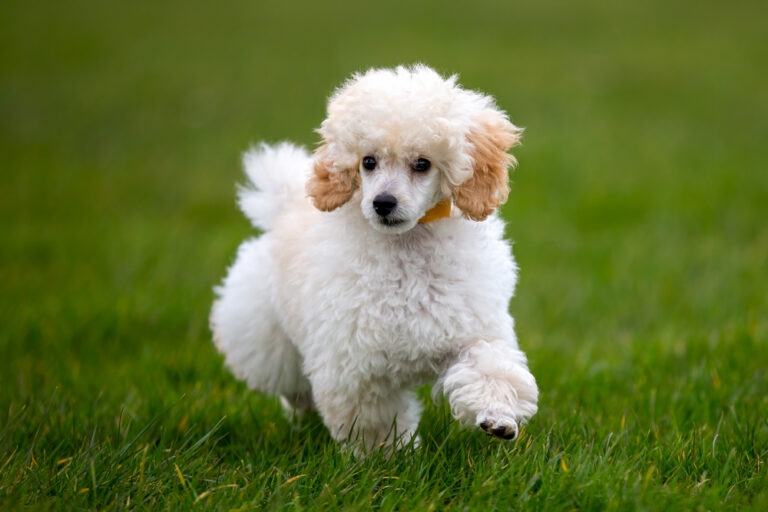- September 7, 2024
How Big Do Great Pyrenees Get? Average Weight & Growth Chart (Vet-Verified) – Dogster

The information is current and up-to-date in accordance with the latest veterinarian research.
Size can be a huge determining factor when you are getting a dog. Some people live in apartment spaces that have size limitations while others prefer a large dog over any other size.
Regardless of what category you fall under or why you are concerned, you will likely want to know how big your Great Pyrenees is supposed to get. While many different factors can influence the total size, we definitely have some averages along with what influences the ultimate height and weight.

Great Pyrenees Overview
The Great Pyrenees is considered a giant dog that towers over many other canines. These gentle, docile creatures are well revered for being playful and good-natured.
This dog will get massive before your eyes. You’ll bring home a small fluffy puppy and wind up with a giant in just a few short months. They will impress you with their rapid growth in the beginning, but they will tend to taper out once they reach about a year of age.
If you are interested in the Great Pyrenees, you’re likely wondering exactly how big they will get. After all, if you know anything about the breed, you know that these are not small house dogs.

Great Pyrenees Size and Growth Chart
Now we’re going to get into the actual growth of the Great Pyrenees. Keep in mind that these measurements are averages and will vary depending on the genetics and other factors relating to the Great Pyrenees.
If you have a Pyrenees cross, it can change these results dramatically, so keep in mind that this is only designed to show you the averages for a purebred Great Pyrenees.
| Age | Weight Range |
| 2 months | 10-30 pounds |
| 3 months | 25–40 pounds |
| 4 months | 35–55 pounds |
| 5 months | 45–70 pounds |
| 6 months | 50–80 pounds |
| 7 months | 55–85 pounds |
| 8 months | 60–90 pounds |
| 9 months | 65–95 pounds |
| 10 months | 70–100 pounds |
| 11 months | 70–105 pounds |
| 12 months | 80–110 pounds |
| 24 months | 85-125 pounds |
When Does a Great Pyrenees Stop Growing?
The Great Pyrenees takes quite a long time to mature. While they typically reach their mature height of 25”-32” by their first birthday, these dogs aren’t considered fully grown until they reach about 2 years of age. Many veterinarians don’t want to fix a Great Pyrenees until they reach a more mature stage to allow for complete growth and development.
Spaying or neutering too early can potentially lead to:
- Orthopedic problems
- Cancer
- Weight gain
- Ligament tears


Factors Affecting the Size of the Great Pyrenees
There are several different factors that can affect your Great Pyrenees’s growth. Ultimately, it depends on the individual dog and the lifestyle that you create for them.
Genetics
Genetics play a huge role as to how big your Great Pyrenees will get. These dogs can vary in size depending on bloodlines and several other factors. When puppies are born to a specific set of parents, they will carry a combination of their genetic material, meaning that they will be much like their parents in terms of size, and even temperament!

Diet
Diet can severely impact the growth of your Great Pyrenees. Especially when they are in their growth stages, diet is a crucial element to how big your dog will get. If you feed your dog a nutritious diet that has all of the elements they need as puppies, they will be more likely to grow to their full potential.
However, if a dog was malnourished or overfed as a puppy, it can impact how they develop later.
Every pet is unique in their nutritional needs, so we recommend reaching out to your vet for advice.
💛 🐶 Speak To a Vet Online From the Comfort of Your Couch!

If you need to speak with a vet but can’t get to one, head over to PangoVet. It’s an online service where you can talk to a vet online and get the personalized advice you need for your pet — all at an affordable price!
Sex
In many cases, males exceed the height and weight of their female counterparts. This can vary a little bit depending on the bloodline. For example, some Great Pyrenees bloodlines might be absolutely massive while others are on the small end of the scale no matter the sex.
However, within the same litter, the male puppies generally get bigger than the females.
Health
If a Great Pyrenees has poor health, it could affect their growth. Different illnesses can play a role in how efficiently nutrients are utilized, how much a dog can exercise, etc. This can impact how big they become.
Age
Obviously age impacts how big your Great Pyrenees is. A puppy, for example, will be very small while a full size adult will be enormous. The first two years of life are filled with stages of rapid and gradual growth until they reach their mature size. Weight can fluctuate over time but in general, their body will remain the same size.


Ideal Diet for Maintaining a Healthy Weight
Maintaining a healthy weight is incredibly important for a Great Pyrenees. All dogs need to be at a healthy weight, but it is especially crucial for large dogs. Carrying around extra weight can negatively affect the way that their joints function.
Here are some tips on how to improve your Great Pyrenees’ diet overall.
Choose a Proper Diet
Choosing a proper diet for your Great Pyrenees is paramount. You should always pick a diet based on the advice of your veterinarian, so make sure to clear any dietary choices with them.
Several factors can influence the type of dog food you feed your Great Pyrenees. These dogs can do very well on a high-quality kibble or canned food designed for large or giant breeds. These diets tend to be more affordable and easy to feed.
Fresh food diets are becoming increasingly popular. Many companies offer fresh food diets that are explicitly designed, packaged, and delivered straight to your door just for your dog. These types of diets can be pretty expensive, so make sure to understand the implications of price before you commit to purchase.
Feed Measured Portions
Most fresh foods come in individually sized portions that are designed to match the needs of your dog’s age and nutritional requirements.
Dry kibble and wet canned food have recommended feeding guidelines on the package so you can feed your dog the appropriate amount of dog food at each meal. These are just recommendations and some dogs may need more or less, so speak to your vet about the proper feeding amounts for your specific dog and diet.
No matter the method you use to feed your dog, you should always make portion control a top priority.
Offer Healthy Snacks
There are plenty of safe and health-conscious snacks for dogs to help them maintain a healthy weight and provide them with a little nutritional boost. You can choose healthy alternatives, such as fresh fruits, vegetables, lean protein, and grains. Just talk to your veterinarian first to be sure the snacks you are offering are safe and beneficial.


How to Measure Your Great Pyrenees
Measuring your Great Pyrenees will be very important. In addition to making sure they’re growing properly, it will help you determine exactly what size collar, harness, and other products to purchase for them.
Here is how you can appropriately measure your Great Pyrenees to get the best fit. First you’re going to need something to measure with. It’s best to use a flexible measuring tape and a piece of paper to record your results.
- Body Length: To measure body length, you will start from the base of the tail and extend the measuring tape to the very base of the neck between the shoulder blades.
- Chest Girth: Chest girth is measured from the top of the dog’s shoulder, around the largest part of the chest, and back up to meet the other side.
- Height: To measure height, you will place the measuring tape on the floor by your dog’s front paw and extend the tape all the way to the highest point of the shoulder.
- Neck Girth: All you are essentially doing with neck girth is measuring around your dog’s neck. You would just take the measuring tape and circle it around the dog’s neck at the widest part.
- Weight: Weighing your dog is easy. Just have them sit on a scale. When they’re a puppy, you can also weigh yourself, then weigh yourself holding the dog and subtract your weight. However, this won’t work as well as your Pyrenees continues to grow.

Conclusion
Now you know more about the Great Pyrenees and how big they will get. Even though the ultimate weight and height depends on several factors, you could always get a good average.
Remember that nutrition is incredibly important, especially in the first year of life. Make sure that your Great Pyrenees is getting all of the right nutrients by feeding them a high-quality diet formulated for large breed dogs in order to give them the healthiest life possible.
Featured Image Credit: Danita Delimont, Shutterstock
Tags
What do you think?
Related Articles

New Puppy Checklist: Gear You’ll Need for Your New Dog
Getting a new puppy is really exciting, but before you welcome them home, it’s important to prepare your space for them. Since puppies need a

How Big Do Mini Poodles Get? Vet Reviewed Average Weight & Growth Chart – Dogster
The information is current and up-to-date in accordance with the latest veterinarian research. Learn more » When you buy a Miniature Poodle, you might not

Can Police Dogs Smell Nicotine? Vet Verified Facts & Info – Dogster
The information is current and up-to-date in accordance with the latest veterinarian research. Learn more » While cigarette sales have been declining steadily for decades,

How Old Is 5 in Dog Years? Vet-Approved Guide to Each Size of Dog – Dogster
The information is current and up-to-date in accordance with the latest veterinarian research. Learn more » A common method for calculating a dog’s age is

